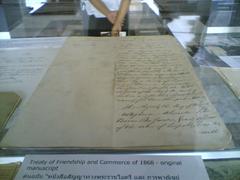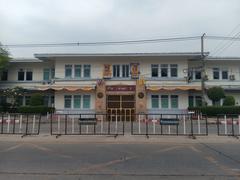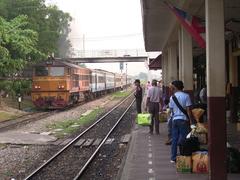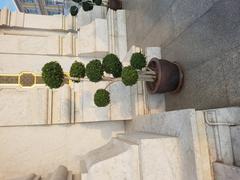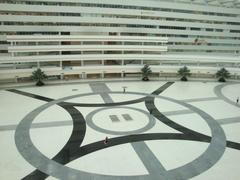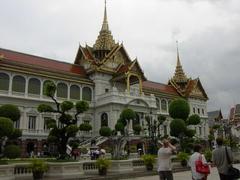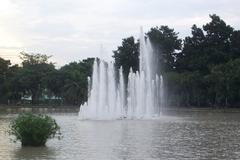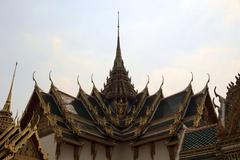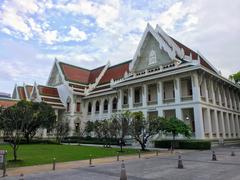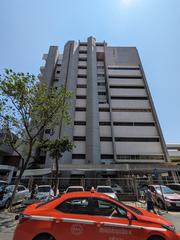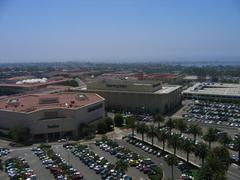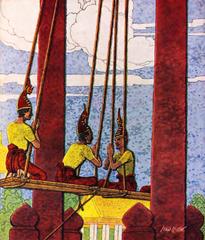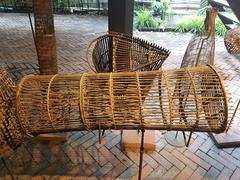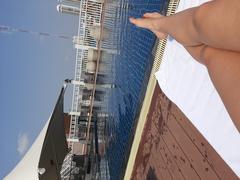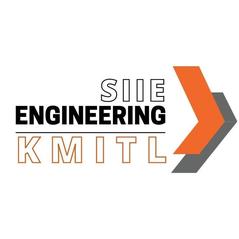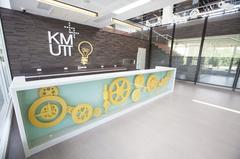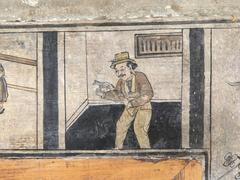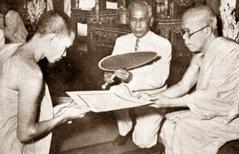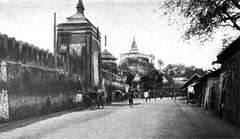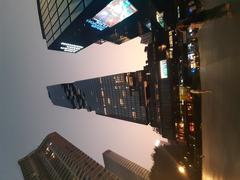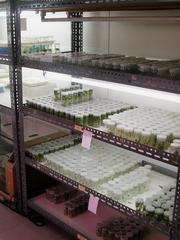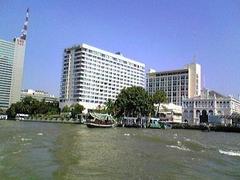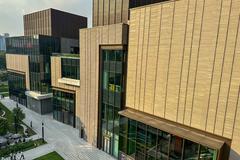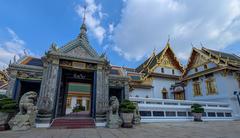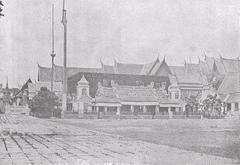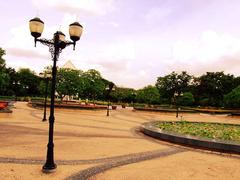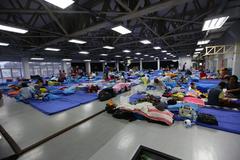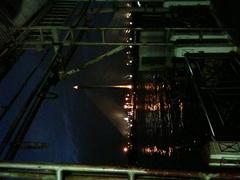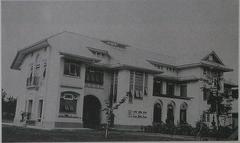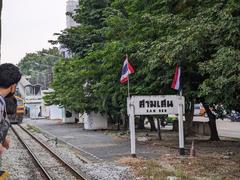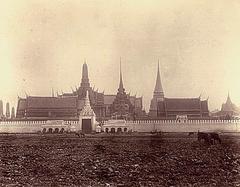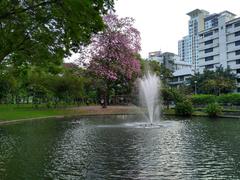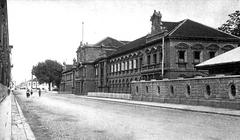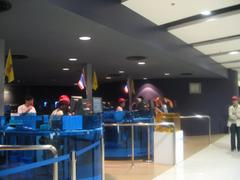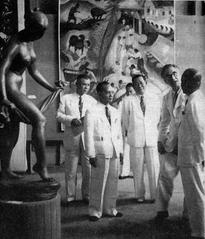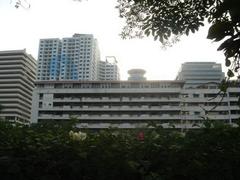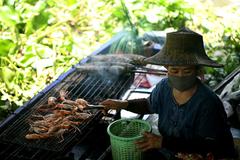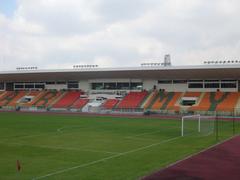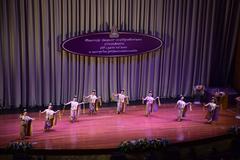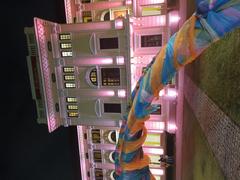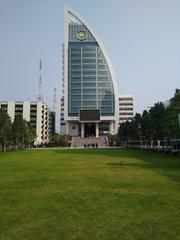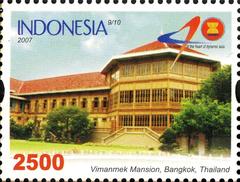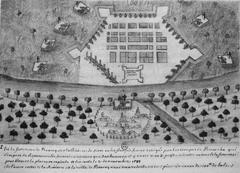Joint Graduate School of Energy and Environment (JGSEE) Visiting Hours, Tickets, and Bangkok Historical Sites Guide
Date: 14/06/2025
Introduction to JGSEE and Its Importance in Bangkok
Situated in the vibrant city of Bangkok, the Joint Graduate School of Energy and Environment (JGSEE) is recognized as a leader in sustainable development, energy research, and environmental studies in Thailand. Formed through a consortium of five premier Thai universities, JGSEE serves as a regional hub for advanced graduate education, research, and innovation in the fields of energy and environment. This unique collaborative approach not only addresses Thailand’s critical sustainability challenges but also fosters international partnerships and academic excellence in the ASEAN region.
JGSEE is headquartered at King Mongkut’s University of Technology Thonburi (KMUTT) on the Bangmod campus. As the administrative and academic center, KMUTT facilitates JGSEE’s operations, while the partnership with King Mongkut’s University of Technology North Bangkok (KMUTNB), Chiang Mai University (CMU), Prince of Songkla University (PSU), and Sirindhorn International Institute of Technology at Thammasat University (SIIT-TU) enriches the consortium with diverse expertise and resources. This structure allows graduate students and researchers to benefit from a broad range of facilities, interdisciplinary programs, and research opportunities across Thailand.
For visitors, JGSEE offers guided tours, consultations, and participation in high-profile events such as the International Conference on Sustainable Energy and Environment (SEE). The campus is accessible by public transportation and offers accommodations for visitors with disabilities, ensuring inclusivity. Its location also provides easy access to Bangkok’s cultural landmarks, such as the Grand Palace and Wat Arun, enhancing the overall visitor experience.
This comprehensive guide will detail JGSEE’s consortium structure, academic programs, research initiatives, and practical information for visitors. For the latest updates, admission requirements, and contact information, visit the JGSEE official website. Additional resources are available through KMUTT news and the International School Guide.
Table of Contents
- Introduction
- JGSEE Consortium Structure
- Visiting JGSEE
- Benefits of the Consortium Model
- Frequently Asked Questions (FAQ)
- Conclusion
- References
JGSEE Consortium Structure
Member Institutions and Their Roles
- King Mongkut’s University of Technology Thonburi (KMUTT):
Lead university, administrative headquarters, and primary research facilities. - King Mongkut’s University of Technology North Bangkok (KMUTNB):
Provides engineering and applied science expertise. - Chiang Mai University (CMU):
Offers regional insights into northern Thailand’s energy and environmental challenges. - Prince of Songkla University (PSU):
Focuses on environmental management and renewable energy in coastal and marine contexts. - Sirindhorn International Institute of Technology at Thammasat University (SIIT-TU):
Specializes in internationalized programs and advanced sustainable technology.
This collaborative structure grants students access to a wide range of academic resources and faculty expertise across the country.
Governance and Academic Programs
JGSEE is overseen by a board consisting of representatives from each partner university, ensuring collaborative decision-making and quality assurance. The director, typically from KMUTT, manages daily operations.
Academic offerings include:
- Master of Science (MSc)
- Master of Philosophy (MPhil)
- Doctor of Philosophy (PhD)
All programs are conducted in English and are internationally competitive. After initial coursework at KMUTT, students may conduct research at any partner institution, leveraging specialized laboratories and mentorship (International School Guide).
Research Centers and International Collaborations
JGSEE houses specialized centers, such as the Life Cycle Sustainability Assessment Lab (LCSAL) and the Research Centre on LCA for Sustainable Development. The school collaborates with partners like the ASEAN Centre for Energy (ACE), Kyoto University, and Japan’s National Institute for Environmental Studies (NIES), enhancing both regional and international research impact (KMUTT news).
Visiting JGSEE: Practical Information
Visiting Hours and Location
- Hours: Monday to Friday, 8:30 AM – 5:30 PM (closed on public holidays)
- Address: King Mongkut’s University of Technology Thonburi (KMUTT), 91 Prach-uthit Rd., Tungkru, Bangkok 10140, Thailand
Google Maps
Admission, Tours, and Accessibility
- Campus Tours: Prospective students and visitors should schedule appointments in advance by contacting the JGSEE administrative office.
- Accessibility: The campus is accessible via public transportation, with parking available for drivers. Facilities accommodate visitors with disabilities; notify staff in advance to arrange assistance.
- Events: JGSEE regularly hosts international conferences and seminars, such as the SEE Conference, open to academics and the public.
Nearby Attractions
JGSEE’s location at KMUTT Bangmod campus provides easy access to some of Bangkok’s most famous historical and cultural landmarks:
- Grand Palace: Iconic royal residence and cultural site.
- Wat Arun: The Temple of Dawn, renowned for its riverside setting and stunning architecture.
- Wat Pho: Home to the Reclining Buddha and traditional Thai massage school.
Grand Palace Bangkok: Visitor Guide
Opening Hours and Ticket Information
- Hours: Daily, 8:30 AM – 3:30 PM (closed for special royal ceremonies)
- Admission: 500 THB for foreigners; free for children under 12; discounted rates for Thai nationals
- Tickets: Purchase at the entrance or online via the official Grand Palace website
Getting There
- Boat: Chao Phraya Express to Tha Chang Pier (short walk to palace)
- Taxi/Tuk-Tuk: Widely available; negotiate fares in advance
- Public Transport: Closest MRT station is Sanam Chai (15-minute walk)
Highlights
- Wat Phra Kaew (Temple of the Emerald Buddha): Most sacred Buddhist temple in Thailand
- Chakri Maha Prasat Hall: Thai-European architectural blend
- Dusit Maha Prasat Hall: Site of royal ceremonies
Visitor Tips
- Dress modestly (shoulders and knees covered; no shorts or sleeveless tops)
- Photography allowed in most areas, but not inside Wat Phra Kaew
- Guided tours and audio guides are available on-site or via tour operators
- Visit early to avoid crowds and midday heat
Accessibility
The Grand Palace is equipped with ramps and accessible pathways, though some areas may have uneven surfaces or stairs. Assistance is available upon request.
Nearby Attractions
- Wat Pho: 10-minute walk; famous for the Reclining Buddha
- Museum of Siam: Interactive Thai history exhibits
- Chinatown: Food and shopping district
Special Events
Check the official website for information on royal ceremonies and potential closures.
Benefits of the JGSEE Consortium Model
- Interdisciplinary Collaboration: Students and researchers benefit from a diversity of expertise and facilities.
- Resource Sharing: Access to state-of-the-art labs and research centers across partner campuses.
- Regional and International Reach: Strong links with both Thai and global partners.
- Flexible Learning: Opportunities to conduct research at any consortium university.
Frequently Asked Questions (FAQs)
Q1: How do I arrange a visit or campus tour at JGSEE?
A1: Email [email protected] or call +66 2 470 8671 to schedule your visit.
Q2: What are the admission requirements for JGSEE graduate programs?
A2: A relevant bachelor’s degree, English proficiency, and research alignment with JGSEE’s focus. See the JGSEE official website for details.
Q3: Are there fees for campus tours?
A3: No fees for academic visits or tours, but appointments must be scheduled in advance.
Q4: Is JGSEE accessible to visitors with disabilities?
A4: Yes, the campus offers accessible facilities. Notify the administrative office ahead of your visit for support.
Q5: Can I visit other consortium campuses?
A5: Visits can be coordinated through JGSEE administration, especially for research interests.
Conclusion
The Joint Graduate School of Energy and Environment (JGSEE) offers a distinctive educational environment for those passionate about sustainable energy and environmental issues. Its consortium model, spanning five leading universities, provides unparalleled opportunities for interdisciplinary study, collaborative research, and international engagement. The main campus at KMUTT is accessible, welcoming, and centrally located for those interested in combining academic pursuits with exploration of Bangkok’s rich cultural heritage.
To get the most from your visit or application process, arrange appointments in advance and consult the JGSEE official website for the latest news, events, and contact information. Explore Bangkok’s historical sites, including the Grand Palace, for a well-rounded experience during your academic journey.
References and Further Reading
- JGSEE official website
- KMUTT news
- International School Guide
- Official Grand Palace Website
- Bangkok Tourism
